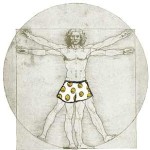Are you an average American?

Circa 1490
An interesting question, don’t you think? I suspect that most of us consider ourselves to fall in this category. One thing I have learned over the years, though, is that each of us tends to gravitate to others with backgrounds and interests similar to our own (birds of a feather and all). As a result, those particular persons with whom we come into contact on a regular basis seem, well, average, just like us. But let’s take a closer look at this average American “John/Jane Doe” and see how each of us actually compares:
Yes, these are all rounded. And I know some of them don’t add up: There are reasons for that. Some sub-categories have been omitted, and others overlap (education sub-categories, for example). These figures have been gleaned primarily from U.S. Census Bureau data but also from Gallup poll surveys and a few other private resources on the net. And they apply to various periods, though ranging from about 2012 through 2014, depending on what I could find without turning the project into work (you know how I feel about that). In any event, I would not recommend using these numbers in your doctoral thesis – or your offspring’s middle school homework, for that matter. And, of course, there are numerous and much finer breakdowns of these statistics, such as personal income by age, sex, race, and so on. But, in any event, I thought it might be enlightening to take a peek at the big picture in order to, perhaps, get a better idea of how each of us actually stacks up compared to the “average American.”
Oh, and as a bonus, here’s a really interesting (and short: 3:20) TEDed talk by James Earle regarding Leonardo da Vinci’s Vitruvian Man.
